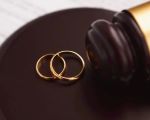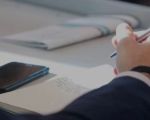Understanding Copyright Claims Against AI-Generated Art
The rise of artificial intelligence (AI) has revolutionized numerous industries, including the world of art. AI-generated art has become a fascinating and controversial topic, raising questions about creativity, ownership, and legal rights. While AI tools can now generate stunning images and pieces of art, the question of copyright protection for these works remains a legal gray area. In this article, we will explore the challenges surrounding copyright claims against AI-generated art, shedding light on the complexities of this emerging issue and offering insights into what creators and legal experts are saying.
1. What Is AI-Generated Art?
AI-generated art refers to works of art created by algorithms or machine learning models, often using large datasets of existing artwork. These systems, like OpenAI’s DALL·E, Google’s DeepDream, or similar tools, can generate images, paintings, sculptures, and other forms of art based on textual prompts or pre-existing visual styles. The result is a unique creation, but one that is created not by human hands, but through artificial intelligence processes.
While AI-generated art can be incredibly creative and visually captivating, it raises important legal questions, particularly concerning copyright. Who owns the rights to a piece of art created by an AI? The creator of the AI, the user who prompted the AI, or the AI itself? These are some of the fundamental issues that are currently being debated in courts and legal circles.
2. Copyright Law and AI-Generated Art: The Basics
Copyright law is designed to protect original works of authorship, granting creators exclusive rights to reproduce, distribute, and display their work. For traditional art, this is fairly straightforward—the artist who creates the work is typically the one who holds the copyright. However, the situation becomes murky when it comes to AI-generated art. Since AI systems are not human creators, the question arises: can a machine-generated artwork be considered original enough to qualify for copyright protection?
In most jurisdictions, copyright protection is only granted to works created by human beings. This has led to a complex legal dilemma, as many countries, including the United States, have not yet established clear rules regarding the copyrightability of AI-generated works. This lack of clarity has led to disputes over who holds the rights to AI-generated art and whether AI itself can be considered an author.
3. Case Studies and Legal Precedents
Several cases and legal precedents have surfaced, which shed light on the challenges of applying traditional copyright law to AI-generated art. One notable case involved a work created by an AI called "Creativity Machine," which generated an image that was later submitted for copyright registration in the United States. The U.S. Copyright Office rejected the application, ruling that works created solely by non-human agents do not qualify for copyright protection. This decision has been a significant point of contention in the ongoing debate.
However, there have been instances where human involvement has been recognized in the creation of AI art, leading to more favorable outcomes for those seeking copyright protection. For example, in cases where a person provides significant input or direction to the AI, such as choosing prompts or refining the output, courts may be more likely to recognize the individual as the creator and grant them the associated rights. This highlights the complex nature of AI-generated art and the importance of human involvement in the creation process for copyright purposes.
4. Who Owns AI-Generated Art? The Legal Dilemma
The question of ownership is central to the debate over AI-generated art. If a work is produced by an AI system, who should hold the copyright? Should it be the developer or company that created the AI, the individual who used the AI to generate the artwork, or the AI itself? Different legal systems may provide different answers, but the issue remains unresolved in many jurisdictions.
In some cases, AI companies assert that they retain ownership of the art generated by their systems, since they own the underlying technology. Others argue that users who generate the art should hold the copyright, as they provide the input and direction for the creation process. This lack of clarity means that AI artists could potentially find themselves in legal disputes over the ownership of their works, and could even face challenges in licensing or selling their creations.
5. The Impact of AI-Generated Art on Traditional Artists
AI-generated art has the potential to reshape the art world in profound ways. While it opens up new opportunities for creativity and innovation, it also raises concerns about its impact on traditional artists. Many artists are worried that the rise of AI art could lead to an oversaturation of the market, making it harder for human creators to stand out. Additionally, the idea of machines generating art raises questions about the value of human creativity and the authenticity of artwork.
Despite these concerns, AI-generated art has also been praised for pushing the boundaries of what is possible in art. It allows artists to explore new mediums and styles, and some human artists are using AI as a tool to enhance their work. In this way, AI-generated art can complement traditional art rather than replace it. However, the legal issues surrounding AI art ownership remain a significant hurdle for both artists and creators in the field.
6. The Future of Copyright and AI-Generated Art
As the use of AI in the art world continues to grow, it is likely that copyright law will evolve to address the challenges posed by AI-generated works. Some legal experts suggest that new legislation may be needed to clarify the rights and responsibilities of AI creators, users, and companies in relation to AI art. There is also the potential for new intellectual property frameworks that consider AI as a tool used by human creators rather than a sole creator in and of itself.
In the meantime, it is essential for creators and companies involved in AI-generated art to stay informed about current legal developments and consider consulting with legal professionals if they wish to protect their work. Platforms like ESPLawyers can offer valuable resources and legal expertise for navigating these complex issues.
7. Conclusion: Navigating the Legal Landscape of AI Art
The rise of AI-generated art presents exciting possibilities for the future of creativity, but it also raises important questions about copyright, ownership, and the role of human creators. As the technology continues to evolve, the legal system will need to adapt to address the complexities of AI art. For now, creators and companies involved in this field must remain vigilant, ensuring they understand their rights and responsibilities in the ever-changing landscape of AI-generated art.
For those seeking expert legal guidance in navigating the world of AI art and copyright issues, visit ESPLawyers, where you can find tailored advice and support on intellectual property rights.








